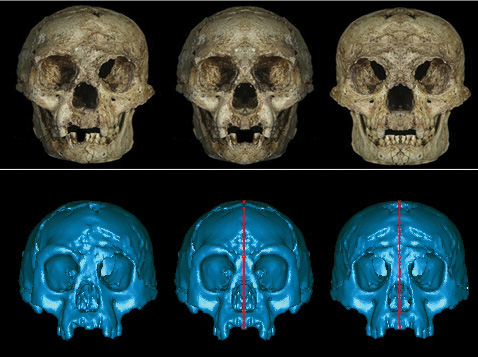Hobbit wars
Small islanders show no signs of growth disorder
COLUMBUS, Ohio —Defenders of a small humanlike species that lived on an Indonesian island more than 12,000 years ago have launched their latest scientific counterattacks against critics of their position. Remains of Homo floresiensis, also referred to as hobbits, display no signs of growth disorders proposed by researchers who regard the fossils as those of modern humans, says Dean Falk of Florida State University in Tallahassee.

Instead, Falk and Florida State colleague Angela Schauber suspect that H. floresiensis—especially as represented by a partial skeleton called LB1—adapted to a challenging island environment by evolving into a smaller but proportionally equivalent version of an ancestral species, possibly Homo erectus.
Falk and Schauber presented separate papers on April 10 at the annual meeting of the American Association of Physical Anthropologists.
“LB1 didn’t have any of the growth pathologies that have been attributed to it,” Falk said.
For instance, last year a research team asserted that LB1 exhibits 33 skeletal symptoms of Laron Syndrome, a type of insensitivity to growth hormones. Aside from a reduction of face and limb size, this condition includes a rounded protrusion of the forehead and a depressed ridge on top of the nose.
Measurements, photographs, and three-dimensional computed tomography reconstructions of LB1 show almost no similarities to published data on the anatomy of Laron Syndrome, Falk holds. In particular, LB1 displays unique skull and tooth traits. It also possesses “whopping long feet” relative to body size, in contrast to the typically small feet observed in Laron Syndrome, she notes.
Preliminary findings also indicate that LB1 did not suffer from one form of microcephaly, a genetic growth disorder, or from cretinism, a nutritionally influenced growth disorder, Falk adds.
LB1’s unique suite of skeletal traits often recall those of human ancestors from more than 2 million years ago, collectively known as australopithecines, as well as those of chimpanzees in some respects, the Florida State investigator says.
Schauber used museum skeletal collections to establish that certain species of foxes and mice have evolved into “proportional miniatures” of larger counterparts. “The same process could apply to H. floresiensis,” she says.
Island gray foxes, found on islands off the California coast, show the same brain size relative to body size as larger mainland foxes do, according to Schauber. In addition, dwarf little mice match the relative brain size of much larger, normal-sized mice.
LB1 shows no signs of having had a relative brain size distorted by any growth disorder and could well have been a proportional dwarf, as observed in foxes and mice, Schauber asserts.
Robert Eckhardt of PennsylvaniaStateUniversity in University Park remains unmoved by the new results. He regards LB1 as a pygmy Homo sapiens that suffered from a still-undetermined growth disorder. About 400 dwarfing syndromes exist in people today, leaving an extensive list for Falk and her fellow hobbit advocates to consider for LB1, Eckhardt said at the physical anthropology meeting.
Primitive-looking features of LB1’s wrist and arms actually fall within the range of variation for people today, Eckhardt argued. “H. floresiensis is an imaginative composite,” he concluded.